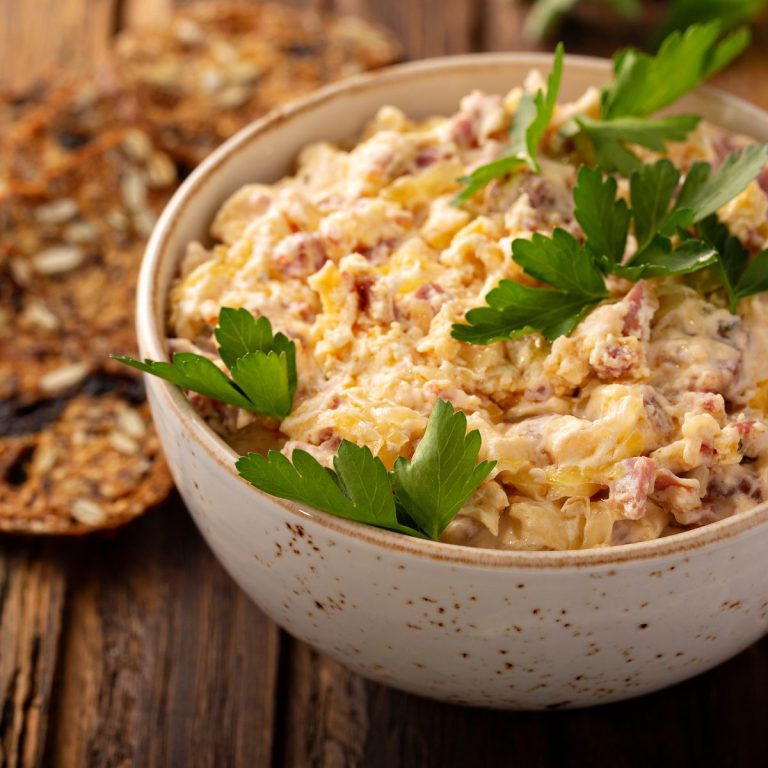how many calories in a stick of butter
Many of us love cooking with butter but worry about its impact on our diet. A standard stick of butter contains about 810 calories, which can quickly add up in meals. Our article will break down the calorie content and nutritional information of both salted and unsalted butter, guiding you to use it wisely without giving up flavor.
Keep reading to balance taste with health!
Key Takeaways
- A standard stick of butter has around 810 calories.
- Salted butter and unsalted butter both contain about 102 calories per tablespoon, with slight differences due to added salt.
- Butter is high in saturated fat, which makes it important to use in moderation and control portions when adding it to your diet.
- There are healthier alternatives to butter like olive oil, avocado spread, or nut butters that provide good fats without as much saturated fat.
- To keep a diet balanced, use small amounts of butter for flavor and try using other substitutes in recipes where possible.
Understanding Butter and its Nutrition
Butter is a dairy product made from churning cream, and it can be salted or unsalted. It contains primarily milk fat but also has small amounts of water and milk proteins. Understanding the nutritional composition of butter is essential for making informed dietary choices.
Definition of butter
Butter is a dairy product made from churning cream. The process separates butterfat from buttermilk. You end up with a solid form of milk fat that tastes good and can be spread on bread.
People use it in cooking to make foods rich and delicious, too.
It usually has two main types: salted and unsalted. Salted butter has some salt added for flavor. Unsalted butter does not have extra salt so the pure taste of the cream comes through more strongly.
Chefs often like to use unsalted butter so they can control how much salt goes into their dishes.
Composition of butter
Now that we know what butter is, let’s delve into its composition. Butter is primarily made up of milk fat, water, and milk solids. The fat content in butter gives it its rich and creamy texture, while the water and milk solids contribute to its flavor and color.
Typically, salted butter contains around 80% milk fat and unsalted butter contains about 81-82% milk fat. Understanding these components helps us comprehend the nutritional value of this widely used ingredient.
Let’s explore the calorie content of this refrigerator staple next!
Types of butter (salted, unsalted)
Butter comes in two main types: salted and unsalted. Salted butter contains added salt, which can affect the taste of recipes. On the other hand, unsalted butter has no additional salt, making it a versatile choice for both sweet and savory dishes.
When choosing between the two types, consider your recipe’s flavor profile and any dietary restrictions related to sodium intake.
Both salted and unsalted butter can be used interchangeably in most recipes; however, it’s essential to adjust the amount of added salt when substituting one for the other. Understanding the differences between these types of butter allows you to make informed choices based on your specific cooking or baking needs.
Calories in a Stick of Butter
Salted butter contains approximately 102 calories per tablespoon, while unsalted butter has about 100 calories per tablespoon. Understanding the calorie content of different types of butter can help in making informed dietary choices.
Calories in salted butter
Salted butter contains about 102 calories in one tablespoon. It also has 7 grams of saturated fat and a small amount of protein and carbohydrates. The calorie count may vary slightly depending on the brand, so it’s essential to check the nutrition label for precise information when using salted butter in recipes.
Moving on to “Calories in unsalted butter,” let’s explore how it differs from its salted counterpart.
Calories in unsalted butter
Unsalted butter contains about 102 calories per tablespoon, which is slightly higher than the calorie content of salted butter due to the absence of salt. It also has approximately 12 grams of fat, including 7 grams of saturated fat.
This type of butter does not contain any carbohydrates or protein and is primarily made up of butterfat.
When incorporating unsalted butter into a balanced diet, it’s important to be mindful of portion sizes due to its high saturated fat content. Moderation and portion control are key when using unsalted butter in cooking or baking.
Nutritional Information of Butter
Butter is a rich source of saturated fat and contains minimal amounts of protein and carbohydrates. It also provides some essential vitamins and minerals, making it a versatile ingredient in cooking and baking.
Protein, fat, and carbohydrate content
Butter is mostly fat and contains only trace amounts of protein and carbohydrates. A stick of butter primarily consists of saturated fat, which is around 92% of its total content. It contains minimal protein, with less than 1 gram per serving, and almost no carbohydrates at all.
Therefore, while butter adds flavor to dishes, it’s important to use it in moderate amounts due to its high fat content.
Understanding the nutritional components of butter helps make informed choices when incorporating it into your diet. The next section delves into the vitamin and mineral content present in butter that contributes to its overall nutrition profile.
Vitamin and mineral content
Butter contains small amounts of vitamin A, D, E, and K. It also has a small amount of calcium. However, the levels are not significant for meeting daily nutritional needs. Therefore, it is important to rely on other food sources to meet your body’s requirements for these vitamins and minerals.
While butter contains trace amounts of some vitamins and minerals like vitamin A, D, E, K, and calcium; their quantities are too low to contribute significantly towards fulfilling daily nutritional needs.
Butter in a Healthy Diet
Incorporating butter into a healthy diet requires moderation and portion control. It’s also beneficial to explore alternatives to butter and discover recipes that use it in a balanced way.
Moderation and portion control
To include butter in a healthy diet, it’s essential to practice moderation and portion control. Butter is high in saturated fat and calories, so it’s important to limit the amount consumed.
A small serving size, such as a teaspoon or tablespoon, can still add rich flavor to dishes without overwhelming the meal with excess calories and fats. Alternatives like olive oil or avocado can also be used in cooking and baking to reduce overall saturated fat intake from butter.
Choosing smaller portions of butter and incorporating it mindfully into recipes allows for the enjoyment of its flavor while keeping dietary intake balanced. By being mindful of portion sizes and including other sources of healthy fats in meals, individuals can savor the taste of butter without overdoing their daily calorie and fat consumption.
Alternatives to butter
Instead of butter, you can try using olive oil or avocado as a spread. These alternatives are lower in saturated fat and high in healthy monounsaturated fats. Another option is to use nut butters like almond or peanut butter, which provide healthy fats and protein.
You can also consider using hummus as a flavorful alternative for sandwiches and wraps. Coconut oil is another substitute that adds a unique flavor to dishes while being lower in saturated fat compared to butter.
In cooking and baking, you may replace butter with applesauce or mashed bananas for moisture in recipes, especially for baked goods like muffins and quick breads. Additionally, Greek yogurt can serve as a creamy replacement for butter in various recipes.
Recipes using butter in a balanced way
Enjoy the rich flavor of butter in moderation by incorporating it into balanced recipes. Try using butter to sauté vegetables or lean proteins for added richness and flavor. You can also use it sparingly in baked goods, such as muffins or scones, to maintain texture and taste while being mindful of portion sizes.
Using butter in a balanced way means being conscious of how much is used in cooking and baking, and considering alternatives like olive oil or mashed avocado when appropriate. By practicing moderation and exploring alternative options, you can still enjoy the delicious taste of butter without overdoing it.
Explore new recipes with a focus on balance and moderation to make the most of this versatile ingredient.
Conclusion
In conclusion, the calorie content of a stick of butter varies based on whether it’s salted or unsalted. Understanding the nutritional information of butter is essential for making informed dietary choices.
While butter can be included in a healthy diet, it should be consumed in moderation and portion control is crucial. Exploring alternative options to butter and using it in balanced recipes can contribute to a well-rounded approach to nutrition.
FAQs
1. How many calories are in a stick of butter?
A stick of butter has about 810 calories.
2. What is the calorie content of butter compared to margarine?
Butter and margarine have similar calorie counts, but it varies by brand.
3. Can you tell me the fat content in a stick of butter?
In one stick, there’s around 92 grams of fat, mostly saturated fat.
4. Does butter have any protein or carbohydrates?
Yes, but just a little! A stick has less than 1 gram each of both protein and carbs.
5. What does “butter serving size” mean for calories?
One serving size, which is usually one tablespoon, has about 100 calories.
6. Where can I find nutritional information for butter?
On the label! It shows all you need like calories, fats, proteins and more.






